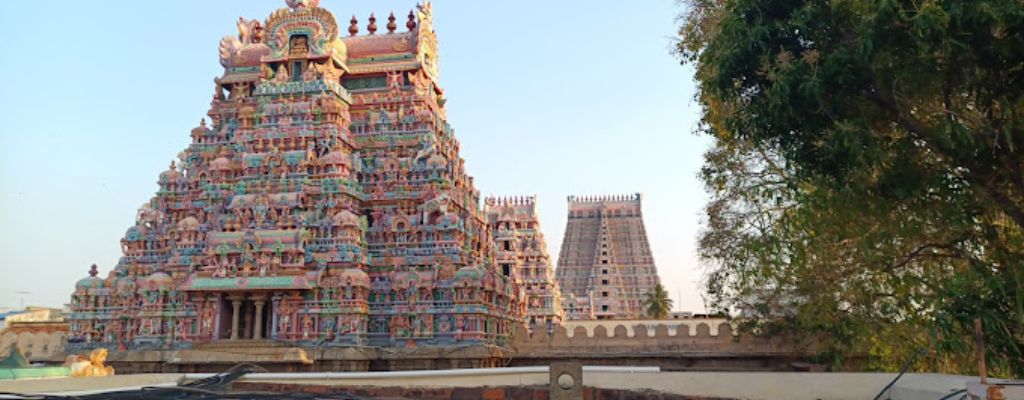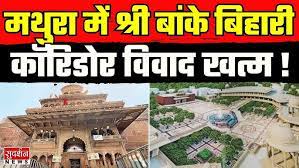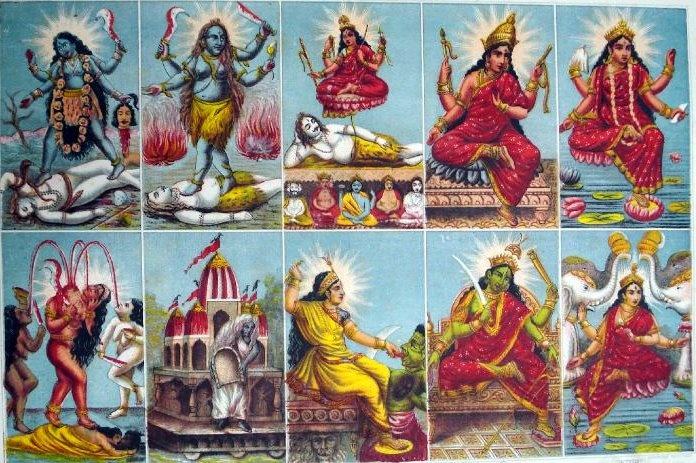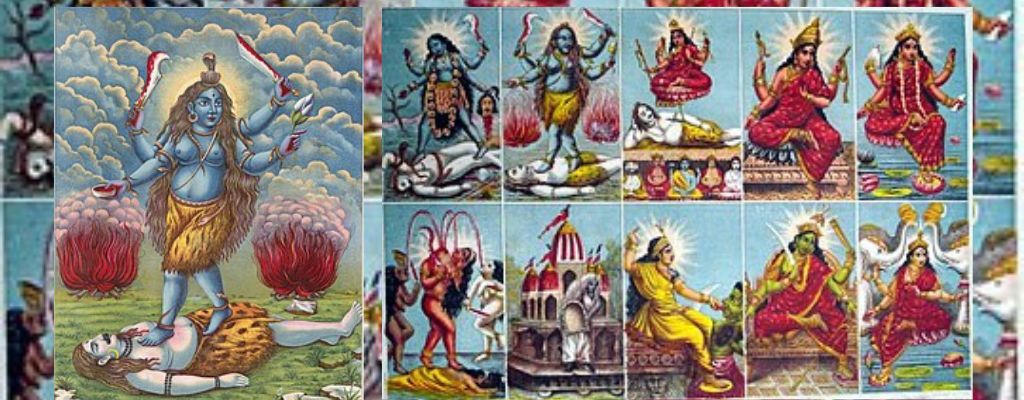India is home to many amazing temples, each with a unique story and history. Among these is the Ranganathaswamy Temple in Srirangam, Tamil Nadu. This temple is a wonderful example of ancient devotion and detailed artistry. Located in the city of Tiruchirapalli, it is one of India’s oldest and most respected religious sites.
Significance of the Temple
The Ranganathaswamy Temple is very important to both devotees and pilgrims. It is a spiritual place that offers peace and a deep connection with the divine. Many people visit this temple every year to seek blessings from Lord Ranganatha.
More than just a place of worship, this temple represents India’s rich cultural and religious history. It stands as a symbol of the enduring devotion of many generations and showcases the nation’s spiritual and artistic heritage.
The Temple’s Layout and Architecture
Dedicated to Lord Vishnu, who is worshipped as Bhagwan Ranganatha, the temple covers a vast area of 156 acres. It is surrounded by seven concentric walls called “Prakaram,” which represent the seven planetary systems in Vedic cosmology. Within these walls are twenty-one entrances, known as gopurams, each decorated with detailed sculptures. The main entrance tower, the “Rajagopuram,” is 236 feet tall, making it the largest in Asia. This enormous structure can be seen from at least ten miles away, highlighting its grandeur.
A large part of Srirangam town is within the outer walls of the temple complex. As you enter, you will see beautifully carved walls that tell stories and share the wisdom of Hindu scriptures. These carvings are so detailed and well-crafted that visitors are often left in awe.
Mandaps and Their Purpose
The temple also has many halls, called mandaps, each designed with intricate artwork. These halls serve various purposes, such as hosting religious ceremonies and providing spaces for kirtans (devotional songs) and pravachans (spiritual talks). The architecture of the Ranganathaswamy Temple showcases the skill and dedication of the artisans who built it. The detailed carvings, layout, and overall design contribute to the sense of wonder and reverence felt by visitors.
The Story behind Ranganathaswamy Temple Srirangam
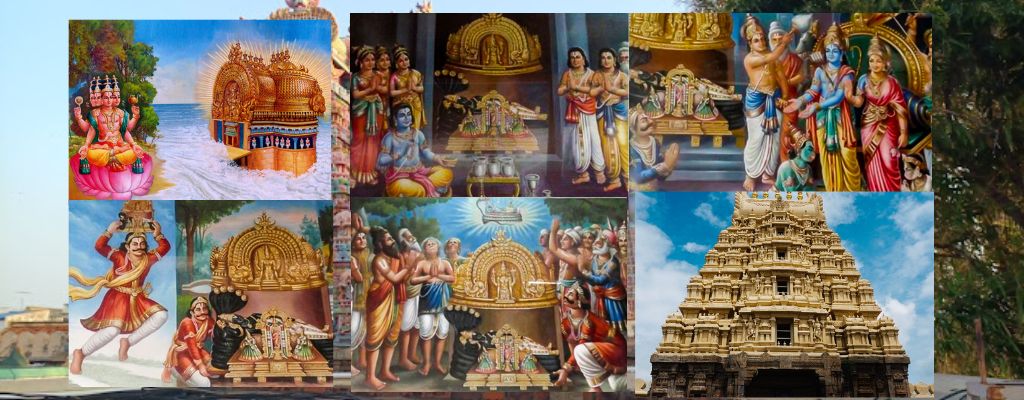
The history of the Ranganathaswamy Temple is ancient. According to various Puranas, it dates back to the creation of the universe. Lord Brahma, born from a lotus sprouting from Lord Vishnu’s navel, was given a mantra to create the universe. After intense penance, Brahma pleased Lord Vishnu, who manifested as Lord Ranganatha. Lord Vishnu revealed that he would appear in eight places on Earth, with Srirangam being the first and most ancient.
The deity was first taken to Satyaloka, where Brahma and his descendants worshipped it. Later, King Ikshvaku of Ayodhya installed the deity in Ayodhya after rigorous penance. After Lord Rama’s coronation in Ayodhya, he gave this deity to Vibhisana, Ravana’s noble brother, as a gift.
On his journey to Lanka, Vibhisana paused on an island along the Kaveri River, where King Dharma Varma reigned. Witnessing the deity’s grandeur, King Dharma Varma prayed for the Lord’s presence in his kingdom. The deity then chose to stay in Srirangam, declaring it as his abode, facing south towards Lanka to protect Vibhisana.
Revival and Modern Times
Over time, the temple was buried under sand due to floods and forgotten. It was rediscovered when a parrot recited a sacred verse, leading to its excavation by a Chola king. The temple saw significant expansion and renovation by Chola and Pandya kings, with contributions from influential Vaishnava leaders like Yamunacarya, Ramanujacarya, and Sudarsanacarya.
Despite facing challenges and invasions, the temple’s glory persisted. It thrived under the Vijayanagar and Nayak dynasties. In 1947, after India gained independence, the temple’s management was handed over to the Indian government and the Sri Vaishnavas, marking a new chapter in its history.
Upa Devathas and Festivals
The Ranganathaswamy Temple Srirangam has many subsidiary deities, known as Upa Devathas, worshipped alongside Lord Ranganatha. These include:
- Goddess Ranganayaki: The divine consort of Lord Ranganatha.
- Lakshmi Narasimha: An incarnation of Lord Vishnu.
- Goddess Andal: Celebrated for her devotion to Lord Krishna.
- Lord Ganesha: The remover of obstacles.
- Sri Hanuman: A devoted disciple of Lord Rama.
- Sri Garuda: The divine eagle and vehicle of Lord Vishnu.
- Sri Anjaneya Swamy: Another form of Lord Hanuman.
- Sri Rama and Sita: The divine couple.
- Sri Chakrathazhwar: Associated with the Sudarshana Chakra.
During festivals, the temple’s smaller sacred idols, called Utsava Deities, are paraded in chariots and palanquins. These processions are filled with music and joy, allowing devotees to get an up-close view and seek blessings. These events highlight the temple’s rich heritage and bring the community together in celebration and devotion.
Conclusion
The Ranganathaswamy Temple in Srirangam is not just a religious site but a living symbol of India’s spiritual and cultural heritage. Its intricate architecture, rich history, and vibrant festivals make it a place of great reverence and wonder. Visitors to this temple can experience a profound connection to the divine and a deep sense of peace and awe.

